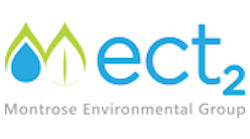In Fall of 2018, the Michigan Department of Environment, Great Lakes and Energy (EGLE) conducted a statewide public water supply sampling program. Robinson Elementary School in Grand Haven, Ottawa County, Michigan was sampled in September, and received their results at the end of October. The school’s drinking water tested over 70 parts per trillion (ppt) for PFOS and PFOA. This finding caused the school to immediately stop using their well water and instead use bottled water for drinking and cooking. As this expense could add up quickly, the school needed to find a solution to their contaminated water problem.
A quick and proven solution was required to provide the school with secure and safe drinking water. The Robinson School’s consultant FTCH, provided ECT2 an RFP for a Point of Entry Treatment System (POET) using Granular Activated Carbon (GAC). The size of an appropriately designed GAC system overwhelmed the available space. The answer was a state-of-the-art Ion Exchange system utilizing ECT2’s SORBIXTM L-Series PFAS treatment system with our SORBIX PURE Ion Exchange (IEX) resin. The L-Series PFAS Treatment System met both the limited space requirements and was a lower cost than the originally proposed GAC system. In addition to the space issue, the IEX technology had never been approved for use in public water systems in Michigan.
ECT2 worked closely with FTCH to provide all the information required to support Michigan Department of Environment, Great Lakes and Energy’s (EGLE) approval. This system was assembled at ECT2’s central fabrication shop in Maine, packaged and shipped to the Robinson School for installation in mid-December 2019. ECT2 chose the Model 24P to treat the 35-45 gallons per minute requirement to supply all the school’s water requirements. The system was the very first Non-Community Public water supply permit for the PFAS treatment system using IEX in Michigan. One of the requirements by EGLE was to have four consecutive clean samples after startup before putting the system on-line, and all four rounds have returned non-detect.
Editor's Note: Scranton Gillette Communications and the SGC Water Group are not liable for the accuracy, efficacy and validity of the claims made in this piece. The views expressed in this content do not reflect the position of the editorial teams of Water & Wastes Digest, Water Quality Products and Storm Water Solutions.



